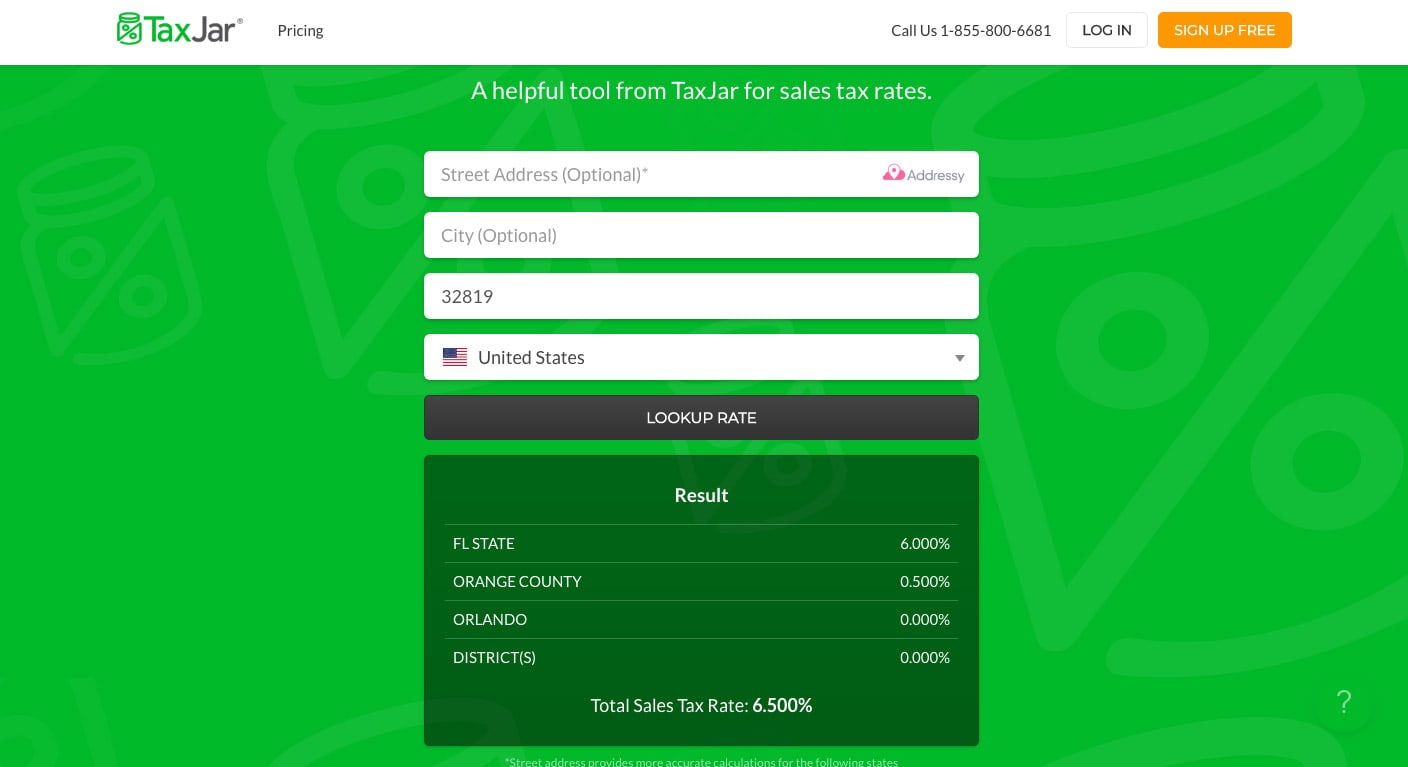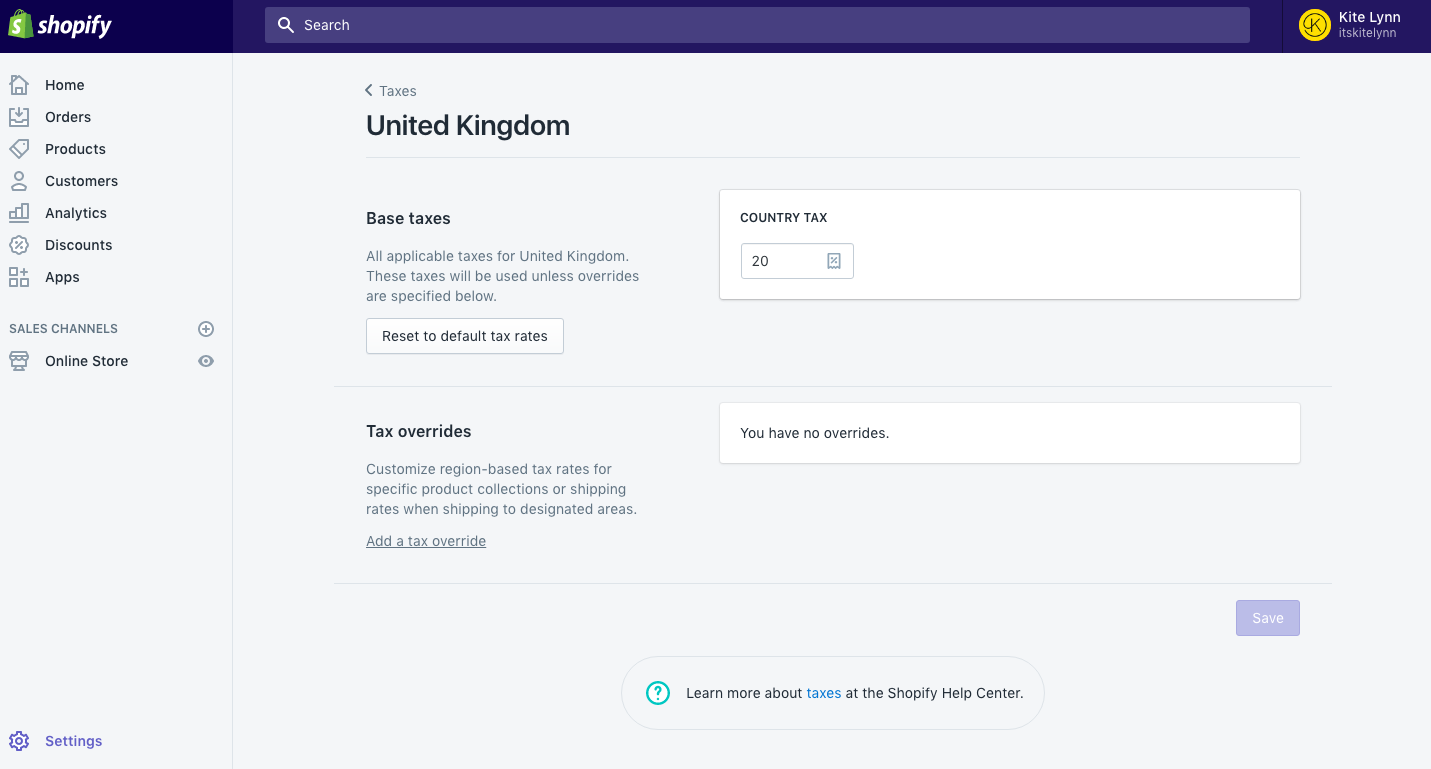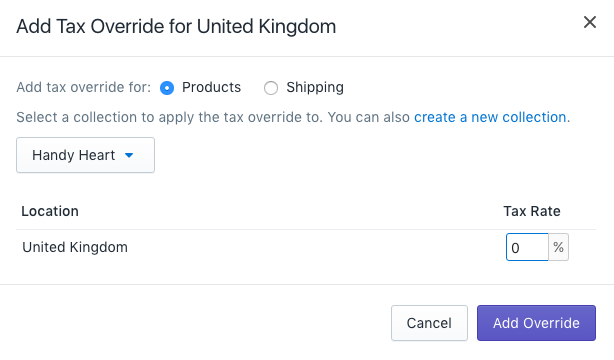Understanding VAT & tax laws in print on demand ecommerce

Tags
Interested in joining the world's leading print on demand platform?
When setting up an ecommerce business, the whole area of tax can seem incredibly overwhelming, complex and even a little scary.
In the following article, we hope to bring some clarity to your tax responsibilities as a print on demand retailer.
Of course, while this article is intended as a helpful starting point, we always advise you to seek professional tax advice to make sure you're fully compliant with all the relevant legislation. It's well worth it to avoid any headaches down the road.
Sales tax & VAT
Let's start with the simple stuff. Sales tax, as you might expect from its name, is essentially a tax charged on each applicable sale. It's called 'sales tax' in the USA, where it applies in 45 states plus Washington D.C.
In the UK and EU, there's something very similar called VAT or 'Value Added Tax'. (In some other countries, it may be called a 'goods and services' tax or GST.)
The main difference between sales tax and VAT/GST is that, whereas sales tax is only imposed on the customer at the final, purchasing stage, VAT is imposed on every step of production (in our case, fulfilment, sales and shipping).
Sales tax and VAT have been around for decades and, around the purchases for which they were originally intended, they were pretty straightforward, and still are. You'd simply pay the sales tax or VAT rate required in the jurisdiction in which the transaction takes place. The rise of online commerce has complicated things slightly, since goods are now commonly bought and sold across different states, countries and continents.
So unfortunately in ecommerce, tax can quickly become challenging and complex.
What makes things even more complicated for business owners is that, rather than being collected from shoppers directly, business owners have to collect sales tax themselves, and then remit it on a monthly, quarterly or annual basis depending on which jurisdiction they, and their customers, are in.
Amidst a murky, dizzying world of exemptions, differing rates and varying legislatures, you're responsible for charging the right customers the right rates. You then need to report and file it all correctly to avoid falling foul of the tax authorities, with aggressive audits and, potentially, expensive fines and penalties.
US Sales Tax
So let's get down to brass tacks and cover what you do, and don't need to pay.
If you're selling in the US, you only have to collect sales tax in states where you have what's called 'sales tax nexus'.
For decades, this essentially meant an in-state 'physical presence', for example, an office, or warehouse.
The original rules around 'physical presence' actually date back to the early mail-order days.
'National Bellas Hess, Inc. v. Dep't of Revenue of Ill' was the case that brought on the inception of the physical presence rule. In this case, the state of Illinois attempted to impose a use tax collection obligation on a mail-order retailer with no physical presence in Illinois, but which shipped orders to customers based in the state via common carrier.
The Court ruled that states were not allowed to impose obligations on an out-of-state seller which lacked a physical presence in the state — and that's the way things were left for the better part of half a century.
As ecommerce continued to take flight — and particularly given Amazon's dominance in the sector — this issue became increasingly contentious.
Eventually, the original ruling was flipped in June 2018 in the case of South Dakota v. Wayfair, Inc. This case upheld a South Dakota law imposing sales tax collection obligations on retailers with an 'economic presence' in the state.
'Economic presence' is defined as a company or person selling more than 200 units, or generating over $100k of sales in any given state. Of course, there's still an element of subjectiveness here — after all, you could sell over 200 items at $1 each. So you need to use sensible judgement and, again, check if you're unsure. The best thing if you're unsure is to check with the state itself to make sure you're totally bulletproof.
So, in short: if you have a physical presence in a state, or you sell 200 units/$100k sales there, you have sales tax nexus in that state.
Your starting point is to work out the states in which you have sales tax nexus, and register for a sales tax permit in those states. It's actually illegal to collect sales tax without a permit in many states, so make sure not to skip this step.
Then you need to make sure you're charging the right tax for each customer who buys from you — but don't worry too much because, as we'll cover shortly, this is often done for you in your shopping cart platform.
If you want to double check, Taxjar offers a simple sales tax calculator which allows you to enter an address, city or ZIP/postal code and instantly find out what the sales tax rate is in that jurisdiction.

EU/UK — VAT
So what about VAT? Well, firstly, you need to pay VAT if you have a UK or EU billing address, regardless of shipping destination. You also need to pay VAT if you're shipping from an international billing address to an EU address. You'll pay according to the standard rates.
However, you don't need to pay if you're in the EU, have a valid VAT number and the goods are being delivered outside the UK — or if you have an international billing address and are shipping outside the EU.
The good news…
This all sounds rather scary and complicated, but the good news is that Shopify (and several other shopping cart providers) are set up to automatically handle most common sales tax calculations for you.
Shopify uses default sales tax rates which are updated regularly, but you can update and override these whenever necessary.
Just head to the Settings > Taxes screen and you'll see that you can easily click in and edit various tax settings.



Shopify also offers a great tax 'manual' which walks you through the process and provides helpful information if you're struggling.
The bad news…
While Shopify automatically calculates taxes, you'll need to file and remit your sales taxes yourself — this isn't done for you.
It's not all bad, though. Shopify offers plenty of reporting tools to help make the filing process easier. For example, when it's time to file sales tax returns in a particular state or jurisdiction, you'll have to figure out how much sales tax you've collected from buyers in the states where you have nexus. You can do this easily through Shopify. Just run a sales tax report through your store's Reports tab.
What about exemptions?
Good question! Certain products are exempt from taxes. For example, in the UK, babywear, children's clothes and footwear are exempt from VAT.
In this case, you can create 'tax overrides' to set a 0% tax rate for specific product collections.

Thanks for reading!
There's no dancing around it — tax laws are incredibly complex and ever-changing, and it can be difficult to keep on top of it. Hopefully we have provided a handy, simple introduction, but if you're unsure about anything we covered today, we definitely recommend reaching out to a tax expert or specialist for further advice.
Interested in running your own print on demand store? Get started with our Shopify App today.



